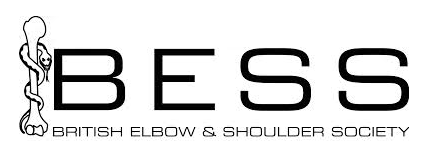Symptoms of a Broken Collarbone (Clavicle Fracture)
What is a broken collarbone (clavicle fracture)?
Clavicle Bone Fracture
A broken collarbone (fractured clavicle) is an injury that typically happens if you fall and then try to break your fall by putting your outstretched arm out. A big force goes up the arm, and across the shoulder, breaking the collarbone, and it’s a common injury in mountain bikers, horse riders, skiers and rugby players.
If you’ve broken your collarbone, you’ll know it’s really painful…
What are the symptoms or signs of a broken collar bone?
The moment you fracture your collarbone, you’ll feel pain and it will be very difficult to move your arm.
You might see a bump or swelling along the collar bone, and perhaps some bruising or even a crunching sensation if you try to move your arm.
You may notice that your shoulder is sitting in a poor position, or even experience pins and needles in your arm.
How is a broken collar bone assessed?
If you suspect that you’ve broken your collarbone, it’s important to seek urgent assessment at an accident and emergency unit. You should have a physical examination and an X-ray, and then the surgeon should advise you if you need urgent orthopaedic surgery. If a piece of bone is about to pierce through the skin, or if there’s risk of damage to important nerves or blood vessels, then surgery must be performed quickly.
You may be discharged from A and E with an arm sling, painkillers and follow up in the fracture clinic. It is important that you see a surgeon who specialises in treating shoulder injuries for further medical help as they can provide a more personalised treatment plan.
This is the time that I can best help you, particularly if the best way to proceed isn’t very straightforward, or if you’ve been potentially offered collarbone surgery.
As an expert in shoulder surgery, I can give you very tailored medical advice, and if needed, surgical treatment within the private healthcare setting. Fractures start to heal within a week, so it’s really important you book in urgently to see me. I’ll do my very best to see you as swiftly as possible.
When you come to the clinic, I’ll be asking you lots of questions about how the injury happened, your symptoms, and what’s important for you in life in terms of work, family commitments and any sporting activities, especially those involving the shoulder joint.
I’ll likely recommend some X-rays to assess the fracture, but sometimes a CT or MRI scan may additionally be needed to give us a more detailed view of the fracture site to confirm the diagnosis and to help determine your treatment plan.
CLAVICLE FRACTURE
What’s the treatment for a collarbone fracture?
Most collarbone injuries tend to occur in the middle third of the collarbone, and if the bone ends are in good alignment, the collarbone is 85 % likely to heal without the need for surgery.
To get the best outcome, you need to keep the fracture immobilised for 4-6 weeks to allow the bone ends to heal. You must use a sling to support the weight of your arm. You will need to wear the sling at all times except when you’re washing your body, or doing some very gentle physio exercises to help prevent stiffening.
Whilst a sling is a good arm support, it may not assist in keeping the ends of the bones in an optimal position to allow them to heal.
After bony union has occurred, physiotherapy is essential to restore your range of movement and strengthen your shoulder muscles. Hopefully, you will return to sports after 2-4 months.
The Clavibrace is a tight waist coat that has specialised padding, reinforced with struts. It’s designed specifically to bring the bone fragments back into excellent alignment.
I’m one of the very few London Shoulder Surgeons who are trained to fit the Clavibrace.
By four weeks, most people are able to spend some time out of the brace intermittently during the day, and it can be removed completely at 6 weeks. X-rays will be taken to ensure the healing is progressing well.
Physiotherapy is very important to restore and restrengthen the normal shoulder movements, and you could potentially aim to return to sports at around the 3-4 months stage.
What happens during surgery for a broken collarbone?
Surgery to repair your broken collarbone will usually happen as a day case procedure, which means you come into hospital in the morning, and go home by the end of the day. Occasionally, an overnight stay may be needed if surgery is carried out later in the day.
You’ll have a light general anaesthetic, and what’s called a nerve block, which helps numb the area, ensuring you’re pain free after the operation.
During the operation, I make an incision over the area where the collarbone is broken, and I clear any debris or damaged tissue.
I fix the ends of the collarbone into their correct position, so they’re in good alignment. I secure them in place using a slender metal plate and screws.
I’m really fussy about the neatness of the skin closure, and I want you to have the best cosmetic outcome possible.
Having surgery won’t speed up the time of getting you back to being fully active (you can’t cheat the healing process), but it’s likely to get you feeling comfortable much more quickly.
We’ll meet again in the clinic at 10 days to remove the dressings and then again at 6 weeks. X-rays will be taken to make sure all is going well, you’re healing, and the alignment is excellent.
Physical therapy is essential to get your shoulder moving well and for restoring shoulder strength.
You may be wondering when you could expect to return to sport.
Whilst everyone is an individual and recoveries differ, you may need to allow 3-4 months before returning to contact sport.
What are the risks of having surgery for a broken collarbone?
What are the risks of having surgery for a broken collarbone?
Thankfully, poor outcomes from surgery are rare. For instance, the risk of getting an infection is less than 1%. In theory there is a very small potential risk of damage to nerves or blood vessels – again very rare. The nerves that supply the skin on the upper part of the chest wall are very small and must be divided to access the fracture site, so you may have a persistent area of numbness in this region. Most patients are not bothered by this at all.
Even after surgery a very rare complication is that bone healing might be delayed or does not occur. To treat these types of complications further surgery may be required to stimulate bone healing.
I’m often asked, is it necessary to remove the metalwork after the fracture surgery? As a rule of thumb, we typically leave the metalwork undisturbed. Very occasionally, if the metal work were to cause irritation, e.g. because of the sensation of a screw under the skin, we might choose to take it out, but only after several months has passed the fracture had fully healed.
Ms Susan Alexander is a senior orthopaedic surgeon and is recognised by all the UK’s major insurers.






